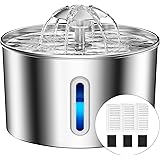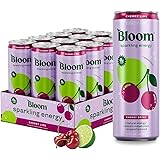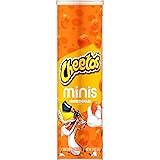The Surprising Diet Debate That Could Make or Break Your SIBO Recovery: Fiber vs. Low FODMAP—Which Side Are You On?
Ever wonder if it’s not how many bacteria live in your small intestine but rather which ones throw the party that really matters? It turns out, our gut drama isn’t about the numbers game—it’s about the guest list. After diving into studies involving over a thousand folks wrestling with irritable bowel syndrome (IBS) symptoms like bloating and tummy troubles, researchers uncovered a surprising twist: lactose intolerance and small intestinal bacterial overgrowth (SIBO) often share the stage. But here’s the kicker—the usual breath tests to spot SIBO? Not exactly reliable detectives. More intriguingly, it’s not about having a swarm of bacteria but having the wrong bacteria crashing your digestive system. And guess what? The food we eat can rewrite this microbial guest list. Fiber-loving bacteria like Prevotella seem to take a backseat when sugary microbes move in, sparking symptoms and even a leaky gut in just one week of poor diet choices. Could dialing up fiber be the secret sauce to silencing these unwelcome gut jesters? Let’s unravel how what’s on your plate shapes the bugs within—and ultimately, your gut health. LEARN MORE
It may not be the number of bacteria growing in our small intestine, but the type of bacteria, which can be corrected with diet.
When researchers tested more than a thousand patients suffering for longer than six months from symptoms typical with irritable bowel syndrome (IBS), such as excess gas, bloating, diarrhea, and abdominal pain, but who do not appear to have anything more serious going on, like inflammatory bowel disease, a significant percentage were found to be suffering from lactose intolerance—intolerance to the milk sugar lactose. In infancy, we have an enzyme called lactase in our small intestine that digests milk sugar, but, understandably, most of us lose it after weaning. “Although genetic mutation has led to persistence of lactase in adults, about 75% of the world’s population malabsorbs lactose after age 30” and have lactose intolerance. However, a third of the patients were diagnosed with small intestinal bacterial overgrowth (SIBO).
“The evidence for SIBO and IBS is shrouded in controversy, predominantly because of the fact that the [breath] tests used in clinical practice to diagnose SIBO are not valid,” as I’ve explored before. As well, the implications of having more versus fewer bacteria growing in the small intestine are unclear since the number doesn’t seem to correlate with the symptoms. It turns out it isn’t the number of bugs growing in the small intestine, but the type of bugs. So, it’s “small intestinal microbial dysbiosis”—not overgrowth in general, but the wrong kind of growth—that appears to underlie symptoms associated with functional gastrointestinal disorders, like IBS.
How can we prevent this from happening? The symptoms appear to be correlated with a significant drop in the number of Prevotella. Remember them? Prevotella are healthy fiber feeders, “suggestive of a higher fiber intake in healthy individuals,” while the bugs found more in symptomatic patients ate sugar, which “may reflect a higher dietary intake of simple sugars.” However, correlation doesn’t mean causation. To prove cause and effect, we have to put it to the test, which is exactly what researchers did.
“Switching a group of healthy individuals who habitually ate a high-fibre diet (>11g per 1,000 calories) to a low-fibre diet (<10g per day) containing a high concentration of simple sugars for 7 days produced striking results. First, 80% developed de novo [new] gastrointestinal symptoms such as bloating and abdominal pain that resolved on resumption of their habitual high-fibre diet. Second, diet-related changes in the small intestinal microbiome were predictive of symptoms (such as bloating and abdominal discomfort) and linked to an alteration in duodenal [intestinal] permeability.” In other words, they developed a leaky gut within seven days. And, while some went from SIBO positive to SIBO negative and others from SIBO negative to SIBO positive, it didn’t matter because the number of bacteria growing didn’t correlate with symptoms. It was the type of bacteria growing, as you can see below, and at 3:12 in my video Fiber vs. Low FODMAP for SIBO Symptoms.

No wonder their guts got leaky. Levels of short-chain fatty acids plummeted. Those are the magical by-products our good gut bugs make from fiber, which “play an important role in epithelial [intestinal] barrier integrity,” meaning they keep our gut from getting leaky.
So, while we don’t have sound data to suggest that something like a low FODMAP diet has any benefit for patients with SIBO symptoms, there have been more than a dozen randomized controlled trials that have put fiber to the test. Overall, researchers found there was a significant improvement in symptoms among those randomized to increase their fiber intake. That may help explain why “high-fiber, plant-based diets can prevent many diseases common in industrialized societies.” Such diets have this effect “on the composition and metabolic activity of the colonic microbiota.” Our good gut bugs take plant residues like fiber and produce “health-promoting and cancer-suppressing metabolites” like short-chain fatty acids, which have profound anti-inflammatory properties. “All the evidence points to a physiological need for ~50 g fiber per day, which is the amount contained in the traditional African diet and associated with the prevention of westernized diseases.” That is approximately twice the typical recommendation and three times more than what most people get on a daily basis. Perhaps it should be no surprise that we need so much. Even though we split from chimpanzees millions of years ago, “there is still broad congruency” in the composition of our respective microbiomes to this day. While they’re still eating their 98 to 99 percent plant-based diets to feed their friendly flora with fiber, we’ve largely removed fiber-rich foods from our food supply.



















Post Comment